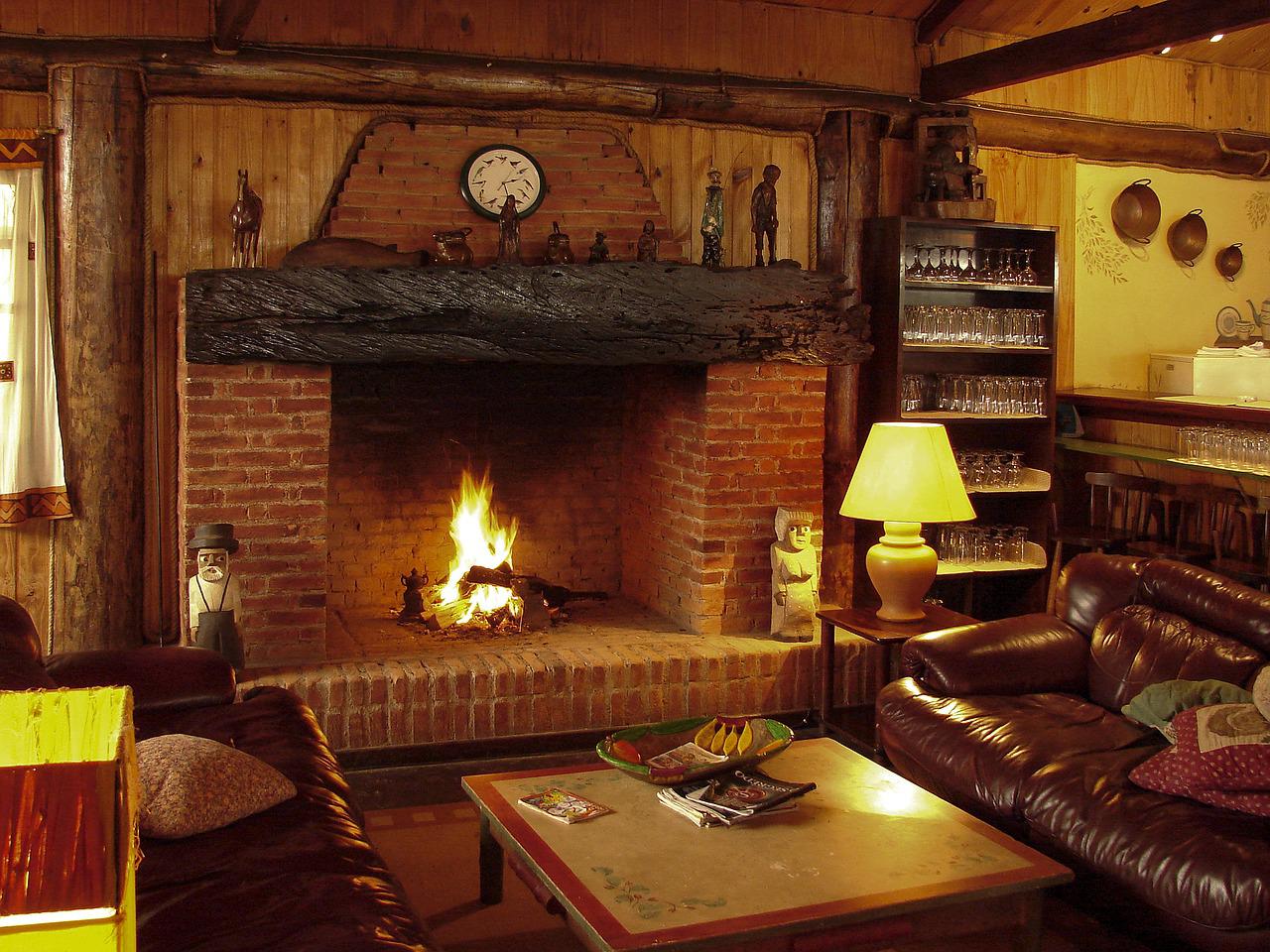Fireplace
A fireplace is usually a very simple combustion chamber, with or without front door, in which fuels are oxidised to obtain thermal energy, which is transferred into a space mainly by radiation. Ref EMEP/EEA air pollutant emission inventory guidebook 2016
Inform Guide: Fireplaces, published by Historic Environment Scotland on 1 April 2008 and last updated on 31 August 2020 suggests that the elements of a fireplace area:
- The chimneybreast (which contains the flue). A chimney is a brick, metal or concrete stack used to carry the exhaust gases from a fireplace into the free atmosphere and to generate draught.
- The chimney piece or fire surround.
- The recess in the wall (which contains the inset and grate). A fireplace recess is a structural opening (sometimes called a builder’s opening) formed in a wall or in a chimney breast, from which a chimney leads and which has a hearth at its base. Simple structural openings are suitable for closed appliances such as stoves, cookers or boilers, but gathers are necessary for accommodating open fires.
- The hearth.
- Other elements which may be incorporated include an ash tray (or bucket), a grate, a fire back, a canopy, fenders and accessories.
It suggests that fireplace accessories might include:
- Poker, tongs and rakes.
- Brush and shovel.
- Fire guards: These are designed to prevent people, especially children, falling into a fire but do not always stop sparks .
- Spark guards: These differ from fireguards in that they are designed to prevent sparks flying from the fireplace and causing a fire. They should have a mesh with gaps no less than 0.071 mm2 and should always be used where an open fire is left unattended.
- Bellows.
- Coal scuttle.
[edit] Related articles on Designing Buildings
Featured articles and news
RTPI leader to become new CIOB Chief Executive Officer
Dr Victoria Hills MRTPI, FICE to take over after Caroline Gumble’s departure.
Social and affordable housing, a long term plan for delivery
The “Delivering a Decade of Renewal for Social and Affordable Housing” strategy sets out future path.
A change to adoptive architecture
Effects of global weather warming on architectural detailing, material choice and human interaction.
The proposed publicly owned and backed subsidiary of Homes England, to facilitate new homes.
How big is the problem and what can we do to mitigate the effects?
Overheating guidance and tools for building designers
A number of cool guides to help with the heat.
The UK's Modern Industrial Strategy: A 10 year plan
Previous consultation criticism, current key elements and general support with some persisting reservations.
Building Safety Regulator reforms
New roles, new staff and a new fast track service pave the way for a single construction regulator.
Architectural Technologist CPDs and Communications
CIAT CPD… and how you can do it!
Cooling centres and cool spaces
Managing extreme heat in cities by directing the public to places for heat stress relief and water sources.
Winter gardens: A brief history and warm variations
Extending the season with glass in different forms and terms.
Restoring Great Yarmouth's Winter Gardens
Transforming one of the least sustainable constructions imaginable.
Construction Skills Mission Board launch sector drive
Newly formed government and industry collaboration set strategy for recruiting an additional 100,000 construction workers a year.
New Architects Code comes into effect in September 2025
ARB Architects Code of Conduct and Practice available with ongoing consultation regarding guidance.
Welsh Skills Body (Medr) launches ambitious plan
The new skills body brings together funding and regulation of tertiary education and research for the devolved nation.
Paul Gandy FCIOB announced as next CIOB President
Former Tilbury Douglas CEO takes helm.
UK Infrastructure: A 10 Year Strategy. In brief with reactions
With the National Infrastructure and Service Transformation Authority (NISTA).























